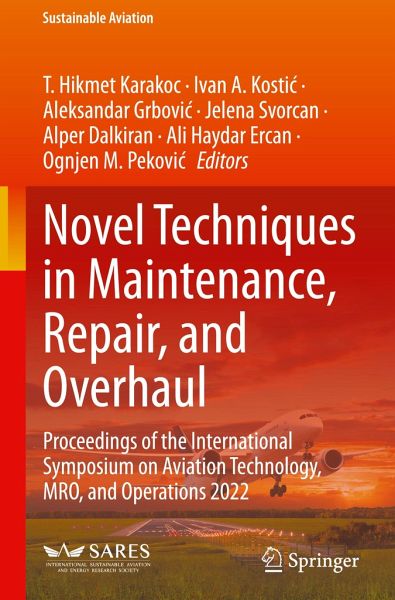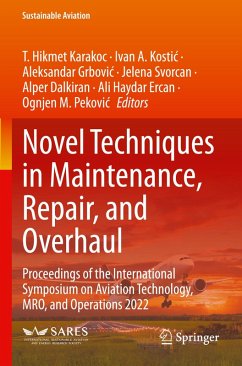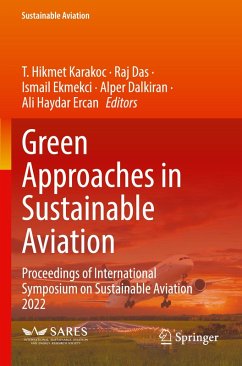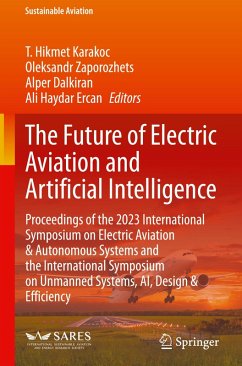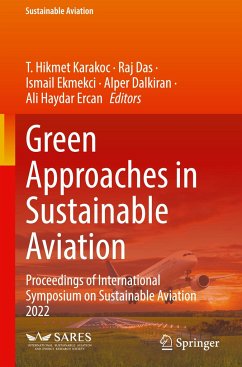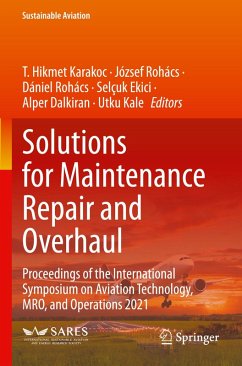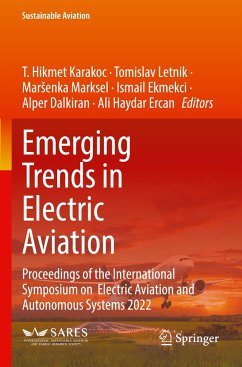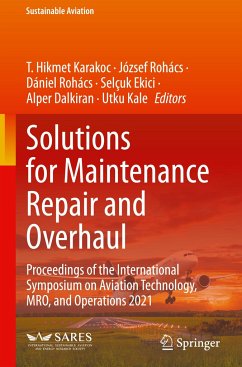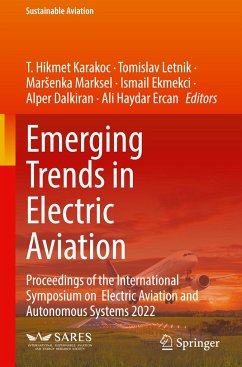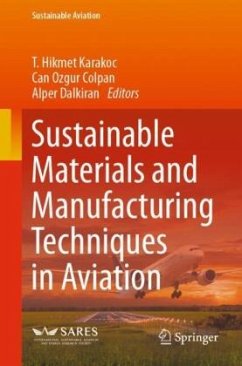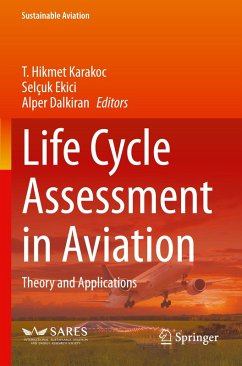T. Hikmet Karakoc, Ph.D., graduated from Anadolu University, the Department of Mechanical Engineering. He received his M.Sc. degree in Mechanical Engineering from the Yildiz Technical University. He received his Ph.D. from Anadolu University, where he started his full-time teaching and received his Full Professorship. He is currently researching at the Eskisehir Technical University. He has a wide range of research interests, including sustainable aviation, aircraft propulsion systems, insulation, heating, ventilating, and air conditioning (HVAC), indoor air quality, gas turbines, cogeneration systems, renewable energy, energy economics, fuels, and combustion. He has participated in numerous industrial projects on these topics as a researcher, consultant, and project manager for over 30 projects and corporations. He also started a contest on special insulation applications among university students. He served as an Editor-in-Chief, guest editor, and editorial board member forinternational scientific journals. He published national and international papers in over 300 journals and 40 books. Professor Karakoc actively follows membership positions for the Chamber of Mechanical Engineers and many sectorial associations, international scientific organizations, and societies. He is an active Board of Directors member of the International Association for Green Energy. He is currently holding the presidency of the SARES organization, which is actively supporting scientists and students in the area of sustainable aviation. He also organizes four symposiums on aviation subject areas as a Founding Chair. Ivan A. Kosti¿, Ph.D., is a Full Professor and Head of the Aerospace Department in the Faculty of Mechanical Engineering at the University of Belgrade. In addition, he is also a lecturer at the Serbian Military Academy of the University of Defence and was previously a lecturer at the Yugoslav Military Aeronautical Academy. He graduated from theUniversity of Belgrade, Faculty of Mechanical Engineering, Aerospace Department, where he obtained his Magister and Doctoral degrees. Professor Kosti¿ teaches courses in aerodynamic design, applied aerodynamics, high speed aerodynamics, air vehicle design, flight dynamics, special topics in fluid mechanics, nonplanar lifting surfaces, airfoils and lifting surfaces of aircraft, aircraft weapon systems, and the theory of bombing and rocketing. He is the author or co-author of more than 150 publications, including scientific and technical papers in journals, conference proceedings, project reports, and books. Professor Kosti¿ is a member of several domestic and international aeronautical associations. He holds his sport and private pilot licenses and has flying experience on single-engine aircraft and sailplanes. Aleksandar Grbovi¿, Ph.D., has been a Full Professor in the Aeronautical Department of the Faculty of Mechanical Engineering at the University of Belgrade (UB-FME) since 2020. He graduated from UB-FME in 1994 and earned a Magister and Ph.D. from UB-FME in 2000 and 2012, respectively. His scientific field is aeronautics, focusing on engineering fracture mechanics and fatigue of aircraft structures. Professor Grbovic has supervised seven Ph.D. candidates and was a thesis defense committee member for an additional 15. He has contributed to developing several laboratory installations, including labs on numerical simulations and aircraft static and dynamic testing. He has published several chapters in monographs and more than 90 papers in international journals and conference proceedings. Professor Grbovic has worked on 20 engineering projects, numerous technical reports and reviews, and has delivered solutions to multiple problems in the Serbian aircraft industry and developing new constructions in the military sector. Jelena Svorcan, Ph.D., is an Associate Professor in the Department of Aerospace Engineering in the Faculty of Mechanical Engineering at the University of Belgrade, where she also obtained her Ph.D. Over a decade-long scientific career, her research has mainly been focused on computational aerodynamics, rotating lifting surfaces, wind energy, turbulence, efficiency improvement, numerical simulations, aircraft design, and optimization. She has participated in several national research projects, including various collaborations with partners from industry. She has authored or co-authored over 70 scientific publications and technical solutions and regularly performs reviews for international scientific journals. Dr. Svorcan has prepared and delivered lectures in different courses at all three levels of study (BSc, MSc, Ph.D.), mentored students, and participated in several MSc and Ph.D. thesis committees. She is a member of the AIAA, the APS, the Serbian Chamber of Engineers, the Serbian Society of Mechanics, and the Serbian Union of Mechanical and Electrical Engineering. Alper Dalk¿ran,Ph.D., received his bachelor's degree Faculty of Aeronautics and Astronautics at Eskisehir Technical University (formerly known as Anadolu University) from the Avionics Department. He completed his MSc degree in the School of Science from Anadolu University in 2004 in Aviation Maintenance. He earned his Ph.D. degree in 2017 in Environmental Sustainability on Airports from the School of Science at Anadolu University by developing a model of energy-based calculations of an aerodrome. Dr. Dalk¿ran has studied aircraft engines, sustainability, airports, and exergy. He has 17 years of professional experience in airports in information technology, automation, and integration. He has managed teams on system design, projects, tests, commissioning, operational readiness, and operations. He has been working in the School of Aviation at Suleyman Demirel University since 2019 and lecturing in flight theory, airline management, and airport design subjects. Ali Haydar Ercan, Ph.D., received his bachelor's degree from the Mechanical Engineering Department, Faculty of Engineering at the University of Cumhuriyet, Sivas, and his MSc degree from the Mechanical Engineering Department at the University of Gazi, Ankara, where he studied Heat Transfer. He earned his Ph.D. from the Department of Aerodynamics, University of Liverpool, England, where he worked on Boundary Layer Theory on Flat Plate Surfaces and developed empiric formulas for transition development distance from the leading edge. He completed his Ph.D. in 1997. He also earned a Postgraduate degree in Software Technologies from the University of Liverpool in 1999. He worked at the University of Cumhuriyet as a lecturer, at the University of Liverpool as an assistant lecturer while studying for his Ph.D., and at Ondokuz May¿s University as Head of the Junior Aviation Technical School, where he was one of the department's founders. Dr. Ercan works as a Lecturer in the Department of Unmanned Aerial Vehicles in Electronics and Automation at Porsuk Vocational School at Eskisehir Technical University. He is also working on PIV (particle image velocimetry) related subjects and a new idea for wing design. He is a reviewer for four journals and a guest editor. He has held a wide range of managerial positions and has experience with international commercial private companies. Ognjen Pekovi¿, Ph.D., is an Associate Professor with the Faculty of Mechanical Engineering at the University of Belgrade, where he also received his M.Sc. and Ph.D. degrees. He teaches courses on finite element methods, computational methods in aerospace engineering, aircraft performances, flight dynamics, aircraft control and systems, and aircraft armament. His research interests include structural design, drones, wind tunnel testing, wind turbines, renewable energy, and energy efficiency. Dr. Pekovi¿ has participated in numerous research, innovation, and commercial projects on these topicsas a researcher, consultant, and project manager over the past 15 years. He is a member of several national engineering associations, including the Serbian Chamber of Engineers, with three active licenses. He has a private pilot license and is a dedicated aviation enthusiast.
